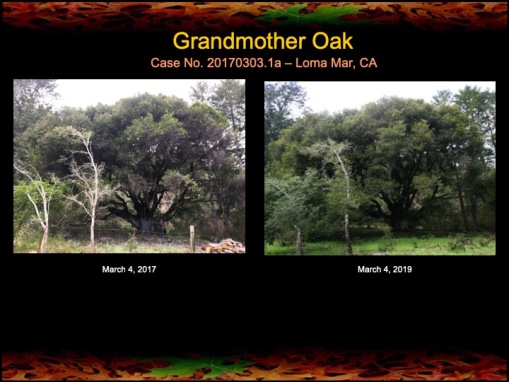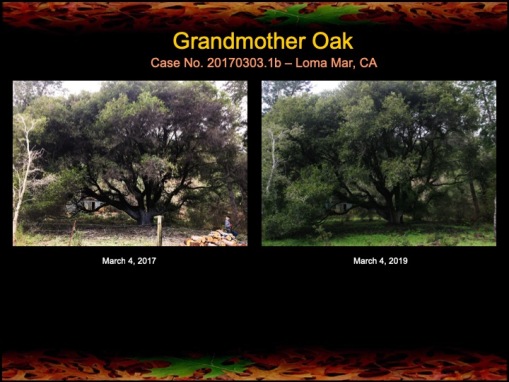A few years ago I encountered an ancient coast live oak that was so magnificent, it took my breath away. At first sight the oak was barely noticeable, hidden behind a wall of young Douglas fir and bay laurel trees. But after slipping past the young trees Grandmother oak appeared. Her trunk was massive, at least 20 feet in girth, and was clearly pollarded by the native people. I estimated her age to be about 500 years, possibly older.


Grandmother oak has spent most of her life under the care of native people, who employed fire to manage the oak woodlands and other ecosystems. They would burn frequently enough to keep fuel loads down, so that the fires stayed on the ground and did not damage the canopies. These fires kept young trees, potential competitors for light and other resources, from encroaching on the oaks. They pollarded the oaks, a common practice of repeatedly cutting the lead stem so as to encourage multiple large spreading branches. This, as any orchard farmer knows, is the most efficient shape for maximizing fruit or nut production. In this case, the native people were managing for efficiency in the production and gathering of acorns.
After the California native people were forced from the land, ranchers followed in many places, such as here where Grandmother oak resides. For nearly a century this land was heavily grazed by cattle and horses, which, like fire, kept the young trees from encroaching.
The land was eventually sold about 30 years ago and stopped being a working ranch. Without any fire or grazing disturbance, dozens of young fir and bay trees quickly started growing around and under the oak. By the time I arrived in 2017 many of the fir were taller than Grandmother oak and were shading out the edges of her canopy. With the added competition for light, water, and nutrients, Grandmother oak was clearly beginning to suffer. Thus, the owner’s called on me for help.
I proposed trying fire mimicry, and they agreed. In early March of 2017 I, and my dedicated crew, began treating Grandmother oak, first clearing away the encroaching fir and bay trees, pruning the dead branches, and removing the mosses and lichens from the trunk. We then fertilized the soils beneath the canopy with compost tea, followed by alkaline-rich minerals, and applied a limewash (a kind of poultice) to the trunk.
The results after just two years of treatments are exciting. as the photos below show Grandmother oak is clearly recovering. If all goes well, she may live another 500 years!



Leave a comment